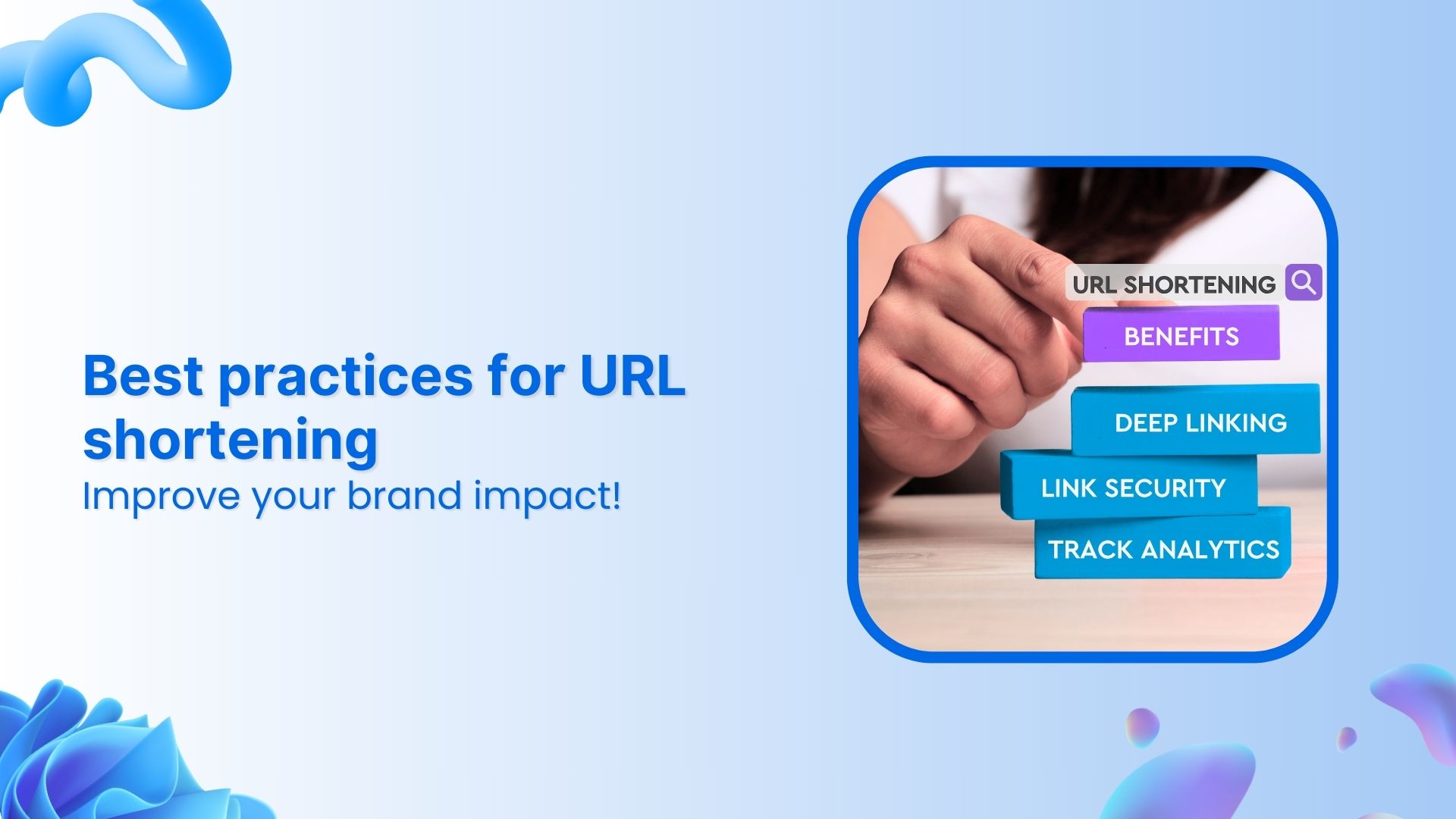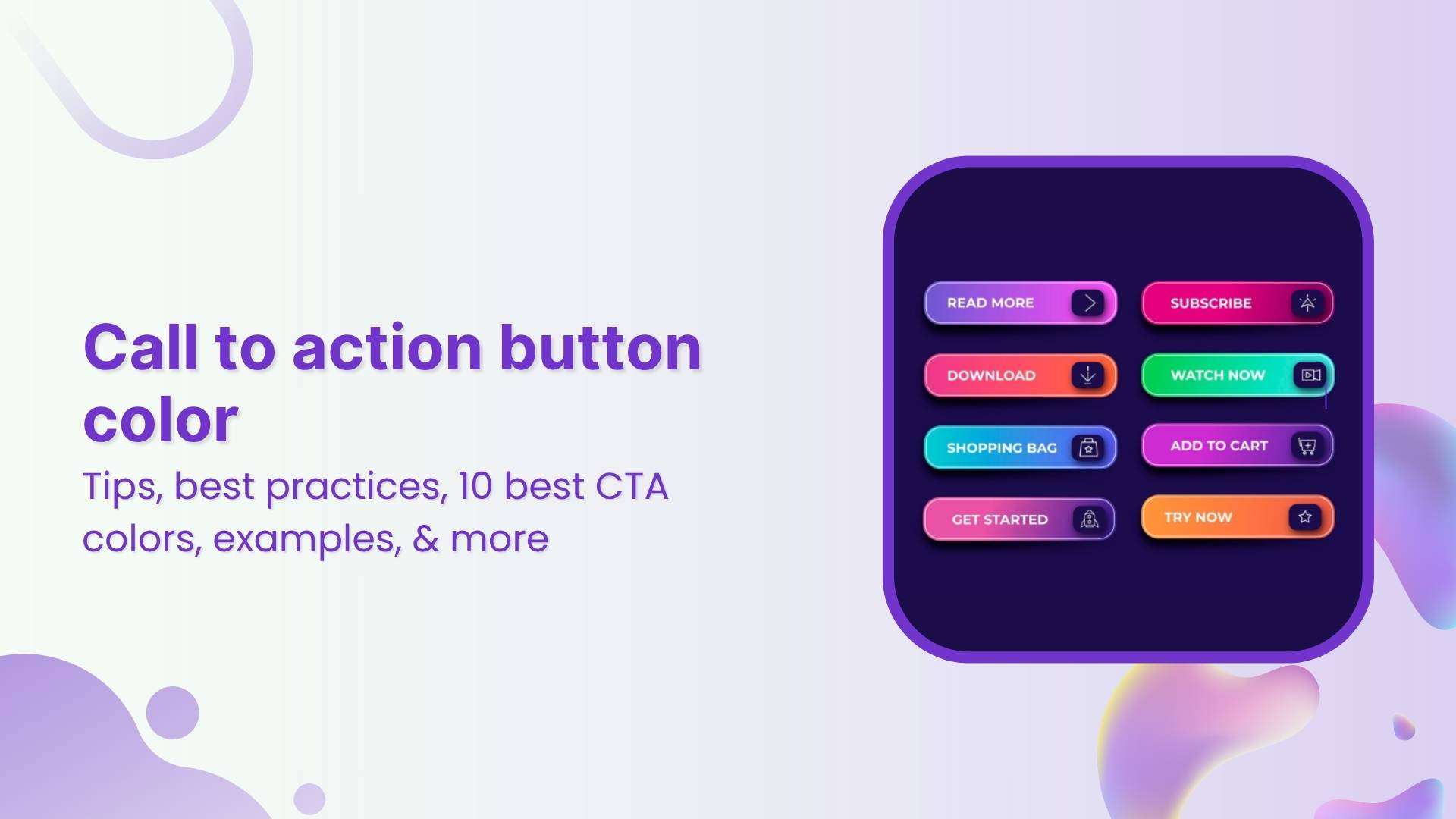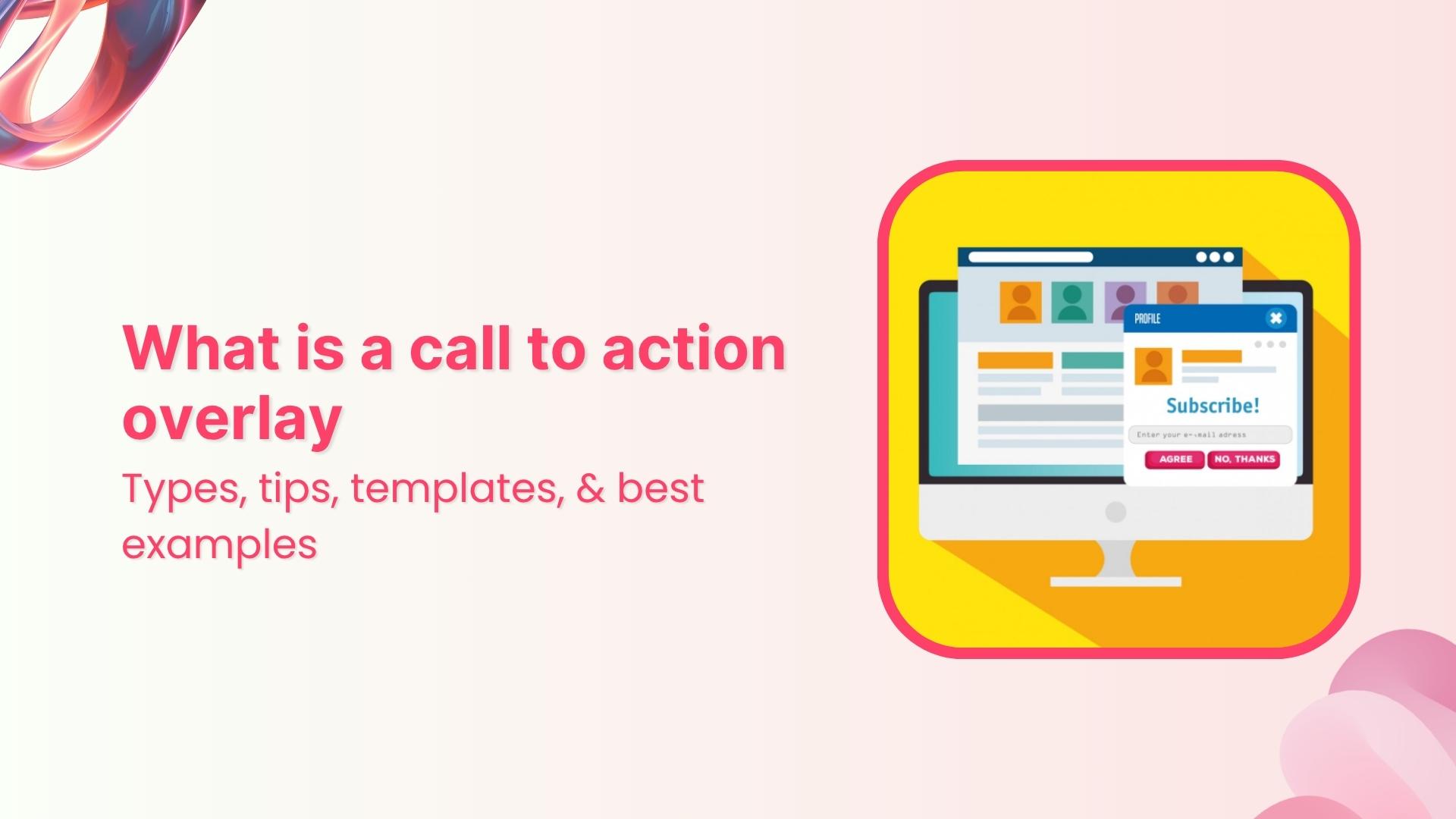Imagine you’re scrolling through your social media feed, and you come across a link. Would you click on it if it’s a messy string of characters, or would you go for a clean, neat URL? Most of us would choose the latter.
Why? A short, crisp URL is more than just visually appealing and builds trust—it tells your audience that the link is safe, professional, and worth their click. This article dives into the top best practices for URL shortening to help you create links that not only look professional but also drive engagement and conversions.
What is URL shortening?
First things first, let’s quickly discuss what URL shortening is. URL shortening transforms complex web addresses into short, user-friendly links.
For instance, this short URL:
is far easier to manage and share than:
Think of it as making a URL more digestible—like getting to the point quickly in a conversation!
Why is URL shortening important?
Shortened URLs aren’t just for aesthetics—they’re crucial for enhancing the user experience and boosting your conversion rates.
Let’s say you’ve got a link to a new blog post. Great! Now it’s time to publish it but the URL looks long and not-so-pleasing to the eyes. It might get cut off in an email post or look clunky in a social media post. But a shortened URL, like:
looks clean and inviting.
Moreover, a well-shortened link improves user engagement, reduces abandoned sign-ups, and creates trust.
11 best practices for shortening URLs
By following these 11 best practices for URL shortening, we can assure you that you’ll enhance both the functionality and the aesthetics of your links.
1. Make it easy to understand
A well-shortened URL should be clean, readable, and easy to understand. Imagine giving directions to a friend: “Turn right at the big grey house,” versus “Turn left at the intersection after the small house with the blue door.” The first set is much easier to follow and concise, much like a shortened URL.
Here’s a comparison between a clear URL and a confusing URL:
Clear URL:
Confusing URL:
The clear URL wins the race here as it’s clearly much easier to follow and understand. Modern search engines don’t need overloaded URLs to understand your page. If users can roughly predict the content just by glancing at the URL, you’re doing it right.
You may also like: Custom URL shortener: Benefits, purpose, and the best tools
2. Add meaningful keywords
Usually, the problem with not using a URL shortener is not having the freedom to customize your URL. Whenever possible, incorporate meaningful keywords in your URLs to create context for users. With the help of link-shortening tools, you can easily create branded URLs that add value to your brand.
For instance, here’s how the famous music artist Sabrina Carpenter uses meaningful words in her branded short URLs:
Another example is of the most-watched fashion & beauty influencer Huda Kattan (Huda Beauty) and how she promotes makeup and skincare products in her YouTube descriptions using short links:
Here’s another example of the famous coffee shop Starbucks:
This link of Starbucks on Twitter (X) leads to a webpage with this URL:
See the difference? The original URL is long and looks like an absolute mess.
Short, meaningful URLs clearly tell users what to expect when they click the link. This not only helps with SEO but also makes it easier for users to know what they’ll find when they click.
3. Focus on link security
It’s crucial to ensure link security when it comes to creating URLs. Imagine sharing a link only to discover it’s leading to a phishing site. That’s a nightmare for both you and your users! They are wary of clicking links they don’t trust, especially if they seem spammy.
Here’s an example of what a spammy message looks like:
Phishy.
The most effective way to protect your links is by using a trusted link management platform that allows you to create, monitor, and optimize them all in one convenient location. This builds trust with your audience and helps you avoid losing clicks due to concerns over security.
Related: HTTP vs. HTTPS: Which one to choose & what’s the difference?
4. Utilize deep linking
Often neglected, one of the best practices for URL shortening is deep linking. Deep linking makes it easy for users to get exactly where they want to go—no unnecessary stops along the way. This improves user experience and when users are happy, conversions tend to follow automatically.
Here’s how Microsoft is using deep linking in its marketing strategy to direct customers to its Azure free sign-up page:
5. Make the URL mobile-friendly
According to statistica, the global number of smartphone users is forecasted to continuously increase between 2024 and 2029 by 1.7 billion users (+37.98 percent). This means that optimizing your links for mobile users is non-negotiable.
Long, complicated URLs can be frustrating to type in and navigate, especially on a small phone screen. So, to make things easier, you should create mobile-friendly URLs to ensure that users have a smooth experience, no matter where they are.
Link shortening tools help you optimize links, ensuring your audience gets the best experience no matter what device they’re using. This not only improves click-through rates but also enhances overall customer satisfaction.
Let’s take two real-life examples of Sephora’s social media posts:
When Sephora messed up:
When Sephora did it right:
In the first image, Sephora used a long, confusing URL that wasn’t optimized for mobile, making navigation clunky and frustrating. In contrast, a streamlined, user-friendly URL in a later version improved the mobile experience dramatically.
You may also like: How do I get my Instagram link on Desktop and Mobile?
6. Track and analyze link performance
What’s the point of sharing a link if you don’t know how well it’s performing? Tracking and analyzing link performance is crucial for understanding your audience and optimizing your strategies.
Let’s say you’re running a cross-channel campaign on Instagram, Facebook, and LinkedIn. With short link analytics, you can see which links are driving the most traffic and adjust your strategy accordingly.
It’s like having a real-time report card on your marketing efforts. This data helps you assess the effectiveness of your campaigns and make informed decisions to improve engagement and click-through rates.
7. Regularly update and maintain links
Old or broken links can seriously damage your brand’s credibility. Imagine a potential customer clicks on one of your links, only to be met with a 404 error or a page that no longer exists! This leaves a negative impression. Link management tools allow you to easily update links across multiple platforms without having to create new ones every time.
For instance, say you’ve created a promotional link for a “Black Friday” sale but forget to update it once the sale ends. That’s a huge missed opportunity and could lead to a frustrating customer experience!
Powerful link shorteners not only update the destination of your links but also set them to expire once the sale is over. This way, you can maintain a smooth and professional user experience, even when promotions are time-sensitive.
Here’s how Replug easily allows you to set a link expiry date:
8. Use short links in multi-channel campaigns
Short links are a great way to strengthen your online branding. When used consistently across different channels, they help create a unified branding experience.
Let’s say you’re running a promotion offering 50% off for the first 50 customers on your new range of coffee beans. Using a consistent URL slug such as /50-off across all platforms will reinforce the message and enhance brand trust.
Using an all-in-one link management tool like Replug helps you track each platform’s performance, letting you fine-tune your campaigns for maximum effectiveness.
9. Avoid case-sensitive short URLs
Case-sensitive short URLs can create unnecessary complications. A tiny change in capitalization can break the link and send your traffic to the dreaded 404 error page.
To prevent this, it’s best to avoid case-sensitive URLs altogether. Opt for a few extra characters in your shortened URL if needed—it’s a small price to pay to ensure your audience reaches the right destination. Using non-case-sensitive link management tools can improve readability without worrying about mistyped links leading to dead ends.
Let’s take an example of Sephora and how a small error of capitalization leads to a broken page:
Lower-case URL:
Case-sensitive URL:
In this example of Sephora, changing the URL slug from /gifts-under-10 to /Gifts-under-10 leads to a “Sorry! The page you’re looking for cannot be found.” broken webpage, even if it’s just a minor difference. This has a massive impact on the user experience, and can even potentially cost you sales!
10. Integrate short URLs with QR codes
One of the best practices of URL shortening to keep in mind is that you can easily create a QR code through link management tools in no time!
QR codes are an excellent way to direct people to your URLs without making them type out the entire link. Even large brands like Netflix use QR codes to streamline login processes, allowing users to scan and log in without typing their details. It’s a small change that makes a huge difference in user experience.
Here’s how Netflix is doing it:
Here’s another example of Coca-Cola using a QR code in its marketing strategy:
You can opt for advanced URL shorteners to generate QR codes within seconds! Here’s how you can do it with Replug:
Related: How to Turn a Link into a QR Code: 6 Simple Steps
11. Create custom audiences using retargeting pixels
Retargeting pixels are like a second chance to engage with customers who didn’t complete their purchase. For example, let’s say a customer adds a pair of jeans to their cart but leaves without buying. With advanced retargeting tools, you can send them a reminder or offer a discount to encourage them to complete their purchase. It’s a bit like sending a friendly nudge to finish what they started.
Here’s an excellent example of how the top Airline Qatar Airways is using retargeting to promote their rewards:
So, the next time you see this ad on your feed, just know that it’s likely that you showed interest in flying with Qatar Airways. This is just a reminder to choose them. In other words: Retargeting.
4 Common URL shortening mistakes to avoid
Even though shortening URLs seems simple, there are a few mistakes that marketers often make. Failing to follow best practices for URL shortening can result in broken links, poor user experience, and a lack of trust from your audience.
Here are some mistakes to avoid:
Mistake #1: Overlooking the importance of A/B testing
Not all links perform equally. That’s why A/B testing is critical for understanding what works best for your audience. Tools like Replug allow you to easily A/B test different URLs to see which ones are driving more clicks.
Mistake #2: Using random URL slugs
A random string of letters and numbers looks unprofessional and gives users no clue where they’re headed. Always use specific and meaningful slugs that tell users what to expect. For example, /summer-deals is far more effective than /345vkld.
Mistake #3: Misusing short URLs on social media
Avoid spamming your audience with too many shortened URLs on social media. This can make you look amateurish or even suspicious. Instead, focus on creating branded, and purposeful social media links that build trust.
Mistake #4: Ignoring UTM parameters
If you’re running marketing campaigns, UTM parameters are essential. They let you track the performance of each link by tagging the campaign source, medium, and specific details. Don’t overlook this valuable tracking tool.
How to choose a reliable URL shortening tool?
Be it enhancing your marketing strategy or boosting your sales!
Selecting the right URL shortener can be a game-changer for you. Here are the key features you should be looking for while choosing a URL-shortening tool:
1. User-friendly interface
Sometimes, URL shortening tools can be quite complicated to understand. Whenever you’re looking for a keyword-shortening tool, make sure that it’s simple to use.
With a user-friendly, powerful, and intuitive dashboard where creating and managing links is easy and quick. Just remember, if it’s taking too long to just shorten a link, it’s not worth your time and money.
2. Cost efficiency
A good URL shortener offers more than just a low price; it provides branded links, analytics, and security, all at a fair cost. Replug lets you strike that balance, delivering great features without breaking the bank!
Here’s a pricing comparison for some of the best URL-shortening tools in the market:
| Tool | Best For | Agency Plans |
| Replug | Complete link management solution with high-end features and low-cost | $79 /mo |
| Bitly | Widely recognized URL shortening with robust analytics | $300 /mo |
| Rebrandly | Focus on link branding and customization | $399 /mo |
| Pixelme | Renowned for retargeting pixels | $400 /mo |
| Bl.INK | Feature-rich URL shortening with advanced tracking and analytics | $599 /mo |
| Cuttly | Straightforward link shortening with detailed analytics | $99 /mo |
From the above comparison, clearly Replug is the best option when it comes to advanced URL shorteners.
Related: 5 powerful benefits of URL shorteners you should know
3. Customization options
Customization options in link-shortening let you create branded URLs, customize link appearance, and adjust tracking. Tailoring your links to match your brand’s identity ensures a professional, cohesive look that makes a real impact.
4. Link analytics
With link data, you can get insights for KPIs like click-through rates, geographic data, and device usage to measure performance. URL shorteners offer detailed analytics, helping you understand your audience and fine-tune your strategy.
5. Security
Security is key when it comes to URL shortening. Always choose a tool that offers SSL encryption to protect your users’ data and privacy. With Replug, every link is secured, giving your audience peace of mind and building trust in your brand. Safe links mean safer browsing for everyone.
FAQs on best practices for shortening URLs
1. Why is it crucial to follow the best practices of URL shortening?
Following the best practices of URL shortening ensures your links are effective and user-friendly. A clean, readable URL not only boosts engagement but also aligns with SEO best practices for shortened URLs, helping your content rank better and improving the user experience.
2. How can I make sure my URLs are secure?
Secure URL shortening practices are essential for protecting your users. Opt for URL shorteners that provide SSL encryption and real-time scanning to safeguard against phishing and other threats. This enhances trust and ensures your links are safe for sharing.
3. What are some effective URL shortening techniques for tracking and analytics?
Effective URL shortening techniques include using tools that offer comprehensive tracking and analytics. This allows you to monitor link performance, such as click-through rates and geographic data, helping you fine-tune your URL shortening strategies and optimize your marketing efforts.
4. Why should I use branded URLs in my marketing?
Branded URLs are a best practice for URL shortening as they reinforce your brand identity and build trust. Customizing your shortened URLs with meaningful keywords and branding not only enhances the appearance of your links but also improves recognition and click-through rates across social media and other marketing channels.

































